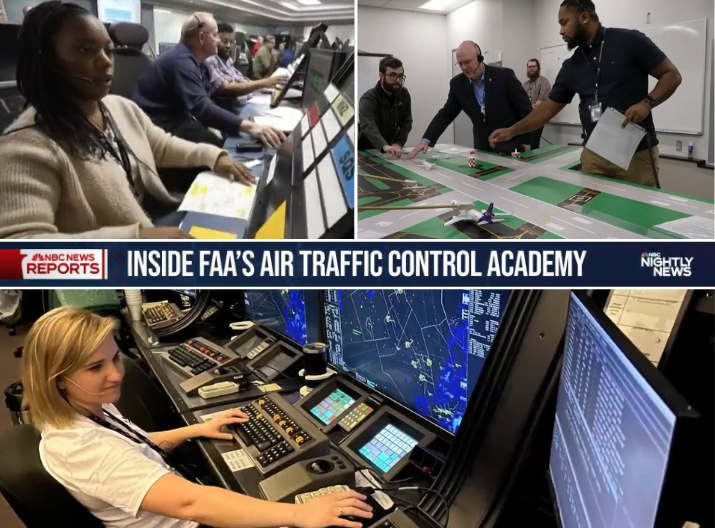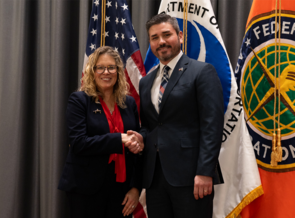|
Inside the Academy
NBC News visits FAA Academy for up-close look at training

As the FAA continuously works to boost the controller workforce, the FAA Academy is full of students. NBC’s Tom Costello was in Oklahoma City to offer viewers a look inside the Academy and what it takes to become an air traffic controller.
“Our goal is five to seven years to be fully staffed and comfortable,” Acting Director of ATO Technical Training Chris Wilbanks said. The FAA is also recruiting veteran military controllers and college program graduates, who go straight to on-the-job training.
Air Traffic Academy Division Manager Dwain Davis explained how gaming skills translate well in controller training, “The ability to take in all of that information quickly, make a quick decision and then if that decision’s not the right one, being able to come up with a plan B or a plan C.”
With the high demands at the Academy, controller trainees face a 30% non-retention rate. “It was one of the most intense things I’ve done in my life,” said 2019 Academy graduate and certified professional controller Janessa Meuleners, “just because you are trying so hard to make it through.”
 Workplace Violence Prevention: Get resources to help foster a safe workplace.
|
|
|
The Community Engagement Activity Tracking System (CEATS) is setting a new benchmark for the National Engagement & Regional Administration (ARA). The software solution provides ARA and the FAA with detailed information about the projects that teams are managing in support of the agency's mission. The system was developed to improve business metrics for various types of accountability requirements, from fiscal responsibility to regulatory mandates. “By collecting and analyzing data from our engagements, ARA can make more informed decisions and continue to improve our outreach strategy in support of the FAA’s safety and efficiency mission,” said Catina Cruz Seggie, who is currently managing the CEATS program while on detail. With this solution, ARA is able to make more informed decisions and improve its operations.
|

John Espinosa, a manager in the Training Delivery and Systems Section, received the Aviation Safety DEIA Award for his efforts in identifying, recruiting and mentoring interns that have helped the FAA connect with talent that advances the safety mission for the next generation. In addition to his role as vice president of the National Hispanic Coalition of Federal Aviation Employees, Espinosa also recently sponsored an intern through the Minority Serving Institutions internship program. “Because of the DEIA activities being accomplished by the FAA and employee resource groups such as the NHCFAE, we’re making the FAA an employer of choice,” he explained. “With so many different perspectives and backgrounds coming together to advance the safety mission, we’ll be able to ensure the safety of the National Aerospace System for years to come.”
|
|
February 9, 1995: NASA astronaut Bernard Anthony Harris Jr. became the first African American to perform an extra-vehicular activity (spacewalk), during the second of his two Space Shuttle missions. In his career as an astronaut, Harris spent 18 days in space—and about five hours on his historic spacewalk. He recalled the awe of floating in space, seeing "this blue and white planet…against this backdrop of stars that I initially saw from Earth, and now see in space… Everything had its place. I have a greater sense of belonging, of the connectedness of all of us." |
|
|
|